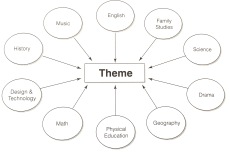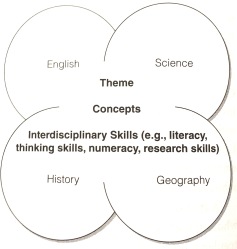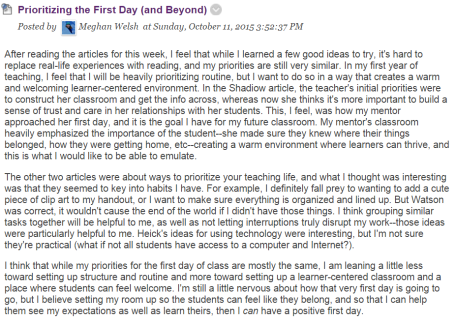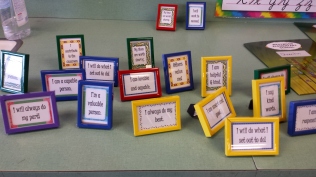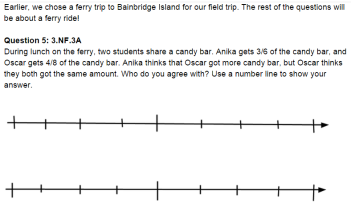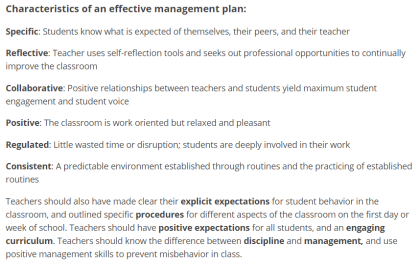Over 20 years ago, a diverse group of youth leaders and educators decided on six “pillars of moral education”, or values they believed were central to the lives of ethical people, regardless of their differences. These values are service, honesty, respect, kindness, participation, and commitment, all of which I think have a place in education. In particular, I think that honesty and respect merit extra attention, though this may be because these are values I personally appreciate in others. However, each one has its own level of importance in providing students with a caring, working environment that prepares them to be citizens with rights to life, liberty, and the pursuit of happiness. Many of these values encourage this kind of citizenship in the classroom to help each other learn, which I think is also significant. Respect is imperative for a warm and nurturing classroom environment that encourages learning, while participation in group, partner, or individual activities improves academic achievement. Without these values within the classroom, it is easy for students (and the teacher) to fall into habits of disrespect or apathy. As an example out of the classroom, several of the characters we read about this week exemplified some of the characteristics that aren’t ideal in a classroom and are not conducive to good learning. In the Bible, Jacob convinced his uncle to let him keep the spotted and striped sheep or goats as payment for his labor, while he left the pure white ones for his uncle. A seemingly decent trade, his uncle agreed, and Jacob was true to his word in this regard. However, he also used trickery to ensure that the babies born of the strong sheep and goats were spotted or striped, and therefore his, while the weak sheep and goats were white, and belonged to his uncle. Though no consequences came of these actions (at least yet, as far as I know), what Jacob did was dishonest and unkind. He helped himself at his uncle’s expense through cheating. In the classroom, tricking other students in such a way would be considered bullying or cheating, and either way is something I’d like to discourage through building positive relationships and a respect for values in my students. In All the King’s Men, Willie Talos seems to start out a decent man, but appears to later be corrupted by politics and the treatment of others. In the chapters describing his later life as the governor, Willie tends to do what he wants despite how it makes others feel. For example, when he and his crew were visiting his father, he disrupts his wife’s happiness (or feeling of success and importance as a hostess) and ignores his father’s wish to spend time with him. All this to speak to a judge hours away who refused to do as Willie asked. Afterward, Willie orders Jack to dig up some “dirt” on the judge, no matter how long it takes and despite Jack’s previous relationship with him. I don’t think he is oblivious to the feelings of these people who are “close” to him, but I think he has lost his sense of caring about them. He does not work with them, he works on his own and orders them about. If I were to assign groups in a classroom, this is not something I would want to see my students doing. When one student takes over the work, he or she is doing everything and not letting others contribute. These others aren’t able to talk about their ideas or discuss anything, and lose interest in the project. I think this is what happened to Jack, whose idea of morality is that “what you don’t know won’t hurt you because it ain’t real” (Penn Warren, 1946, pg. 44). He just goes along with Willie, and though he seems to be thinking along the lines of what is right, he never acts on it. These examples show that values like honesty, kindness, respect, and participation are important in life, and that they do have a place in the classroom.
There is no one way to educate students for character. As I will be teaching elementary students, I hope to make it as fun and interesting as possible, with both explicit and implicit teachings to really get the point across. Explicit so that students have words to describe what they are learning, and can talk about whether or not they were respectful or committed, but also implicit so that they see that these kinds of values can be found everywhere in life, in and out of school. I read a great article on educating kids about lying in a fun way, to help them understand that “covering it up” doesn’t make the bad go away. Briefly, if you put salt on your ice cream, it makes the ice cream taste bad. But what if you cover it up with chocolate syrup? Does it taste better? (It might…I love salty sweets, but the kids probably won’t if you REALLY salt it up!) It’s a fun kind of explicit learning opportunity that you can later reference as needed. These aren’t necessarily the only or the best ways to teach kids about values and character education, however. In The Abolition of Man, Lewis argues that “without the aid of trained emotions the intellect is powerless against the animal organism” (Lewis, 1944, pg. 24). I interpreted this as meaning that someone who is taught from birth that some immoral act (his example is cheating at cards) is something you don’t do is less likely to commit the immoral act than someone who grew up cheating and likes to argue about moral philosophy. It seemed as if he were arguing for training emotions rather than letting students make their own judgment calls, though this was the most difficult read for me (and I needed help from the internet to interpret some of what he was saying!) and I may not have understood it correctly. Does he favor rote memorization over experiential learning? It seemed that way, but I’m not so sure. Regardless, he certainly believes that values are important, and that if we remove all sentiments from the mind, we produce “men without chests”, or people of no will and conscience. He argues that making value judgments are an essential part of clear thinking, which I can certainly agree with.
Sources:
Penn-Warren, R. (1946). All the king’s men. Orlando, FL: Harcourt, Brace & Company.
Lewis, C. S. (1944). The abolition of man. New York, NY: Harper One.
